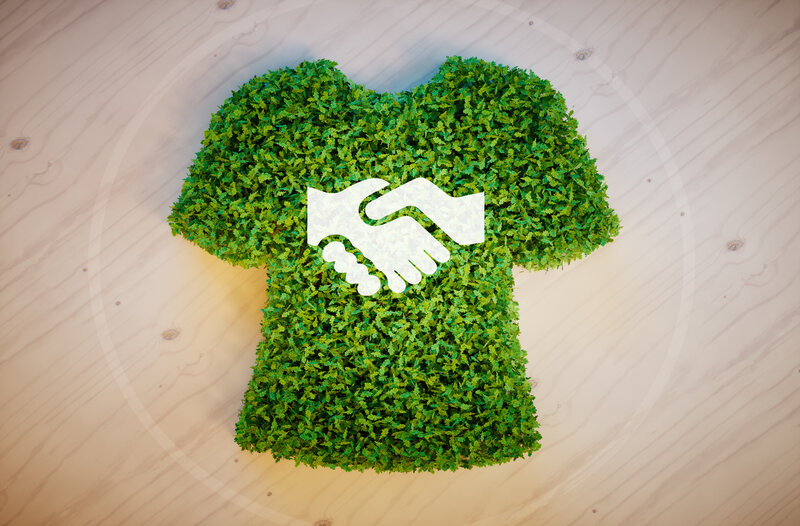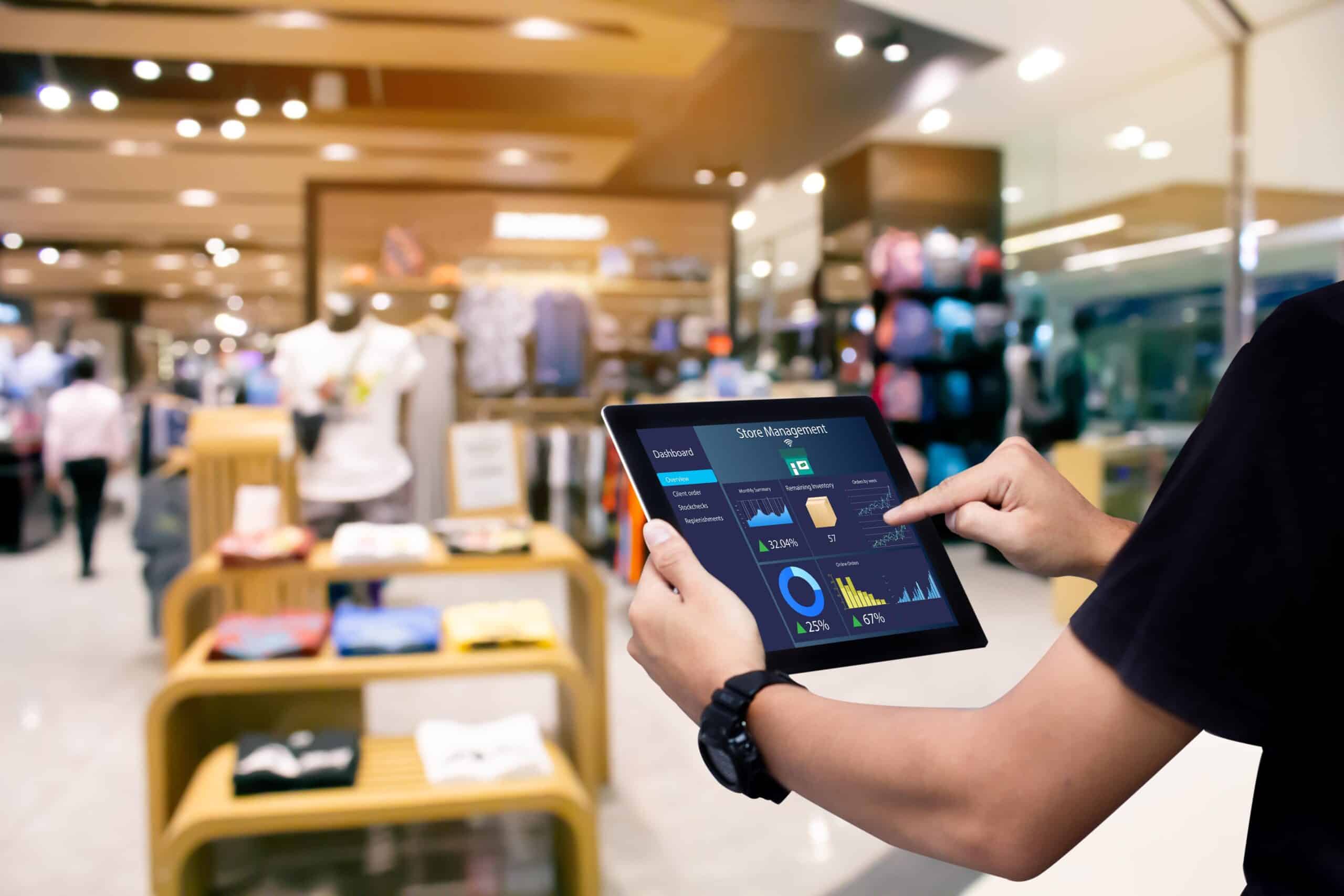The apparel industry is starting to pay attention to sustainability and we see more brands going green to minimise their impact on the environment.
We live in a consumerist society where everything we’d want to buy is available in either physical stores or numerous online platforms where we can shop. Options are virtually endless. Thanks to advances in technology and the rise of e-commerce, we can purchase anything we want at any given time. And today when most brands offer the possibility to buy on their websites, there’s a small number of those who can resist to purchase an item that’s only a click away. This is especially true when it comes to the fashion industry. And tempted with offers “buy two, get the third item for free” or buying before holidays when most brands offer discounts, let’s admit that we all succumb to temptation and buy that pair of jeans or “3+1” T-shearts that we — in all honesty — do not really need. Purposeless shopping and amounting items we don’t need or use end up in a bin. In fact, the latest report shows that $184,41 million worth of clothing ends up in landfill each year.
Sustainable fashion isn’t a fad
Even though sustainability isn’t a word often heard in the contest of fashion and eco-consciousness is on rare occasions associated with the fashion industry, there are changes ahead. Today’s consumers are more environmentally conscious and are insisting on fashion brands to start taking sustainability more seriously. As a result, we see more and more fashion-related companies adopting sustainable business practices. And just like many industries, COVID-19 is having a negative impact on the fashion industry, and the latest figures show that the global Ethical Fashion market is expected to drop down to $6.14 billion in 2020, falling at a compound annual growth rate of -3.24 per cent. The decline is not unexpected, and it’s a result of economic slowdown across countries that were hit hard by the novel Coronavirus. Once the pandemic dies down, the industry is expected to recover and could reach $8.25 billion in 2023, growing at a compound annual growth rate of 10.33 per cent.
Green fashion is going mainstream
A path to a sustainable future takes more than good intention and cool ads that promote eco-consciousness. An increasing number of brands are walking the walk, and not just talk, and by doing so, they’re showing their consumers that they’re truly standing behind sustainability and are showing an effort in their attempts at saving the environment. A known fashion brand Kenzo has teamed up with the World Wildlife Fund (WWF) until 2022, “to double the number of tigers in the wild”, Forbes reports. Another brand that’s jumping on the sustainability fashion bandwagon is Gap. The company has partnered with the global nonprofit Textile Exchange to develop the Preferred Fiber Toolkit. The toolkit is planned to be publicly released and used to help companies in the sector to meet their sustainability goals. The team behind the toolkit explained the mission behind the joint venture. “It also incorporates other holistic indicators to consider environmental considerations such as biodiversity and land-use change, and waste-elimination guidance for contributing to the circular economy,” adding that also “Human rights, labor concerns, and animal welfare within raw material sourcing are also considered, to layer in additional nuance beyond environmental data.” Another cool feature is that “the Preferred Fiber Toolkit allows users to consider environmental effects and additional sustainability values in their sourcing decisions — from fiber to full materials and products.”
Upcycling in fashion is here to stay
Upcycling is not a novelty in the industry, but we see more and more companies turning to upcycling. It’s little known that the apparel industry leaves behind a lot of waste, but this waste doesn’t have to end in landfills. Instad, deadstock, leftover fabric, can be used to make new fashionable items. For instance, it takes over 2,500 litres of water to make a T-shirt, “whereas using a pre-existing T-shirt to make something new requires nearly no water. In addition, upcycling can divert some of the 85% of textile waste that ends up in landfills”. It’s just a matter of creativity how brands would use leftover material and create upcycled garments. Take The R Collective, a Hong-Kong-based brand, that not only creates meaningful designs that should live more than one season, but also “gives new life to high-quality, upcycled fabrics and donates a portion of its profits to Redress – a charity dedicated to reducing waste in the fashion industry”.
Reasons to care about sustainable fashion amid the pandemic
With millions of lives and jobs lost, one would think that sustainable fashion is the last thing that we should pay attention to. However, the global COVID-19 pandemic has brought sustainability at the forefront of many industries as health, ours and of the planet, has never been more important. Also, human health and well-being is closely related to a healthy environment. The Global Fashion Agenda underlined in its Pulse of the Fashion Industry 2019 study that “Fashion companies are not implementing sustainable solutions fast enough to counterbalance negative environmental and social impacts of the rapidly growing fashion industry.” Despite their initial goal to go green, we now have more organisations and companies putting their sustainability goals on hold due to the pandemic, as reported in the study, Rebuilding a More Sustainable Fashion Industry After COVID-19, conducted by Boston Consulting Group, SAC and the Higg Co. Sarah Willersdorf, BCG’s partner and global head of luxury, noticed that the fashion industry is heavily injured by the pandemic, suffering the great loss. “The fashion and luxury industries together are the most negatively impacted of all in consumer goods. “We are looking at sales being down 30%-to-40% globally. Most companies are just trying to survive by focusing on protecting their people and also their cash and liquidity.” Willersdorf also pointed out that “The best thing to come out of this very painful time is that we as individuals understand that our individual actions have societal consequences,” adding that “So while the virus is not directly related to sustainability, it is going to increase the focus on it.”
Walking down the sustainability runway
An increasing number of fashion brands are starting to pay more attention to sustainability, aware that the apparel industry is one of the polluters. Fortunately, both brands and consumers are becoming more environmentally conscious and we see fashion brands start taking sustainability more seriously. Despite being affected by the pandemic like other industries as well, there’s no doubt that the apparel industry will continue to work on their efforts to reduce its negative impact on the environment.




